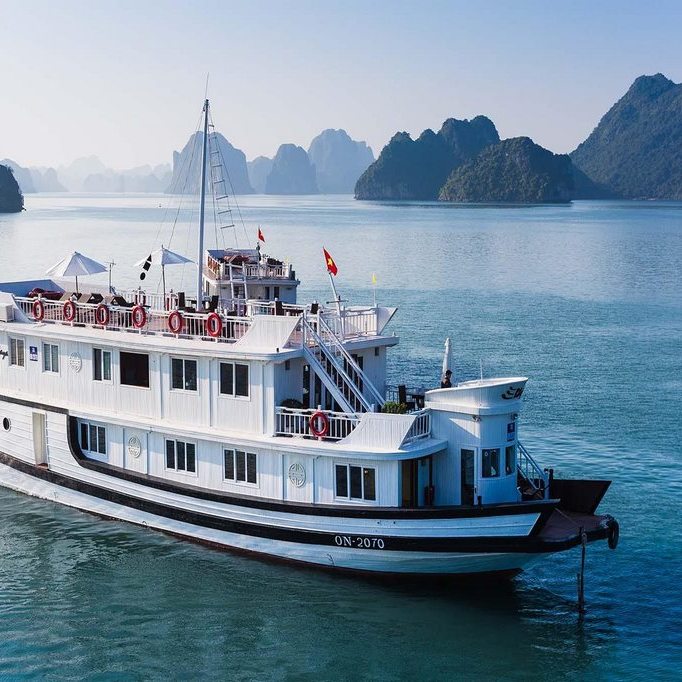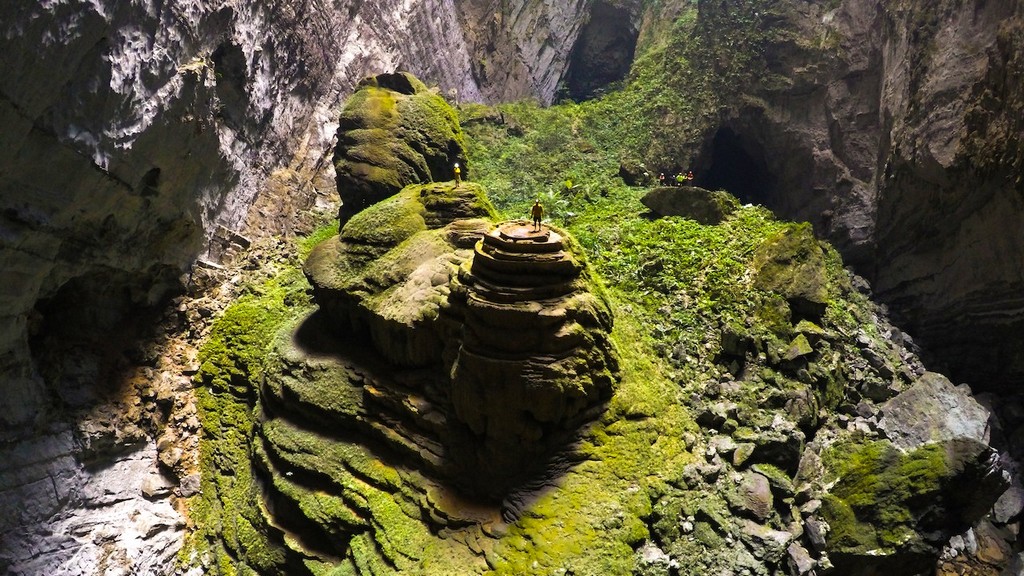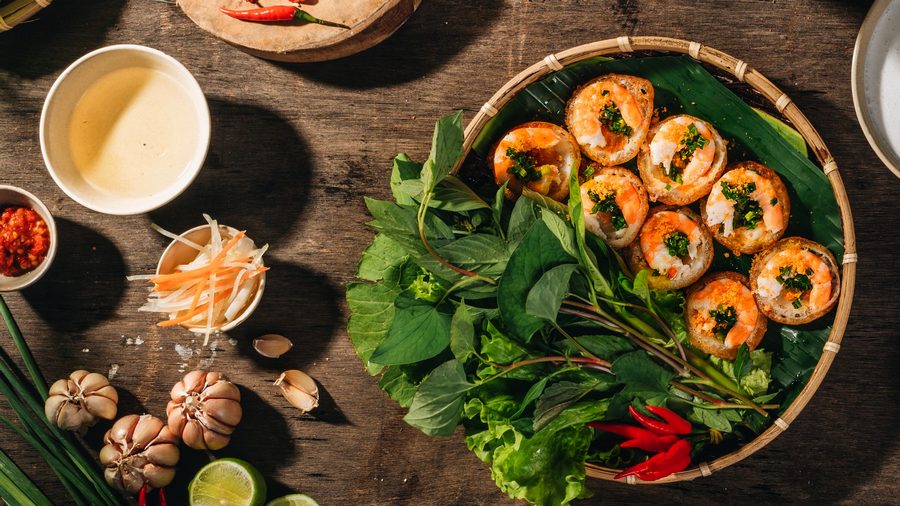Few cities in Asia can boast of being as seductive to the tourist as Hanoi, with French charm and a history of blue dragons. Hanoi is the capital of the Socialist Republic of Vietnam with a charming landscape of lakes, shaded boulevards and leafy parks. It is the perfect place to display its architectural treasures, such as a 1,500-year-old pagoda, French colonial buildings and amazing modern skyscrapers. With its bustling markets, the thriving nightlife and its excellent cuisine attract visitors of all kinds to the old city.
The Red River is the cradle of much of the traditional Vietnamese culture, the city reveals the spirit of historical Vietnam , with its temples, its monuments and its streets typical of an ancestral culture in the old town and reflects at the same time the meteoric changes that They impose in the country, with the executives consuming their cappucinos on the cafeteria terraces while comparing their mobile phones.
Hanoi is the bustle, the markets, the thousands of motorcycles, bicycles and taxis blowing their horns that give the sensation of permanent chaos, of always walking on the wire, of not knowing what will happen in the next corner.
Hanoi is a city that is always alive, because people live in the street and the street beats in every corner, at any time of the day or night. In his men touched with the Army green pith helmet and in their women dressed in the Ao Dais, the traditional and elegant Vietnamese national costume.
The city of prayers to Buddha , the offerings to Confucius and the legends of turtles that carry redeeming swords of oppressed peoples. Hanoi , the city of lakes inexplicably quiet among the rhythm that permeates one of the most interesting cities in Asia.
History of Hanoi
Ly Thai To (monarch of the Vietnamese Ngo, Dinh and Le dynasty ) arrived at Dai La – an ancient city located on the banks of the Song Hong (Red River). According to legend, he saw a gigantic golden dragon emerge from the lake and soar above the city. Persuaded by this augury, he decided to establish the capital in Dai La , which he renamed as Thang Long or Ascending Dragon. He noticed that the land around the new site of the capital was too flat to offer a good defense, so he ordered artificial dikes and hills to be built. Today it is still possible to distinguish in the relief those ancient earth movements.
In 1010 the center of the royal city of Thang Long (Hanoi) comprised eight palaces and three pavilions. The Temple of Literature, the One Pillar pagoda and the Tran Quoc pagoda were built at this time in Hanoi.
From the sixteenth century, very few buildings were built in Hanoi. The King Gia Long built a citadel smaller depending on the model of Vauban , but the French colonialists tore down its walls and doors, and all that remains today is the Flag Tower. The imperial city was destroyed twice in less than 50 years: the first in 1786, when the monarch Le Chieu Thong ordered the destruction of the Trinh palace , and then in 1820 at the hands of Minh Mang, the son of Gia Long , furious because the Chinese emperor would have recognized Thang Long (Hanoi) – not Hué – as the capital.
The dawn of the seventeenth century was marked by the arrival of Dutch, Portuguese and French merchants. Stepping on their heels, the Christian missionaries arrived. The enormous influence of newcomers and European ideas led to numerous changes in the capital of Thang Long (Hanoi). The French presence and influence increased until it altered the course of the history of Vietnam . When in 1882 Hanoi fell into the hands of the French, the city underwent a remarkable transformation and modernization.
Activities
It is the Temple of Literature, the Ho Chi Minh Mausoleum, the One Pillar Pagoda, the Hai Ba Trung Temple, the St. Joseph Cathedral, the silk street, the lakes of Ho Tay, Hoan Kiem and Thien Quang… are unavoidable visits in Hanoi (Vietnam). Touring the streets of Hanoi, you can savor colonial jewels from the French period such as the Municipal Theater or the Cathedral of San José.
The Municipal Theater is undoubtedly the most beautiful example of colonial architecture offered by the Vietnamese capital. It was built in 1911 to house the headquarters of the Opera and from its balconies was proclaimed, on August 16, 1945, the seizure of power by the communist forces. This building is the center of the thriving cultural life, a contrast that can be appreciated every night if you go there to enjoy a program of symphonic concerts to traditional music and Roi Nuoc , the manifestation more rooted in the traditional Vietnamese culture. The Roi Nuoc , are water puppet shows in which actors, musicians, singers and dolls, in an aquatic setting, perform delicious representations, usually of traditional Vietnamese legends.
The Cathedral -of 1886- is a beauty worn out by the passage of time and the abandonment of its walls and gardens that, however, give the temple a special taste. It is also interesting in Hanoi to visit the Temple of Literature. This university offers the most fascinating examples of ancient traditional Vietnamese architecture, many of whose courtyards and shrine erected in honor of Confucius date back to the 11th century.
Recommended is also the one-pillar Pagoda . In the year 1028, the emperor Ly Thai Tong dreamed that Quan The Am Bot Tat, the goddess of mercy, granted him an heir. Immediately, the emperor married a peasant woman who gave her her first child. As a thank you, Ly Thai Tong raised an incredible wooden pagoda with a single pillar in a pond of water lilies. Today there is little left of the original pagoda, destroyed by the French in Vietnam in 1954. An obligatory visit is also the one that must be rendered to the impressive Ho Chi Minh Mausoleum .A pharaonic marble construction in the purest and most orthodox Soviet style that contains the embalmed remains of the father of the country, which are exhibited inside a glass sarcophagus.
No visit to the Vietnamese capital will be complete without the exploration of its old neighborhood and its markets. North of Lake Hian Kiem opens the old neighborhood of narrow streets, hundreds of stalls and tiny surviving stores of the colonial era. The Silk Street, or Pho Cau Go, longitudinally crossing the district towards the Red River , while offering the walker all the color that the city is able to store and all the goods that merchants get stacked. In the maremagnum of the Cho Hom market everything that is seen is alive, except, of course, the vegetables that were harvested at dawn and the cuttlefish that are patiently dried in the implacable sun.
Van Mieu
In the year 1070, King Ly Thai Tong founded a national college in order to educate future mandarins in teachings based largely on Confucian ideas. The school, known as Van Mieu and called the Temple of Literature in the early eighteenth century, when the capital was moved to Hue , has been restored and remains standing in Hanoi. The knowledge of the Confucian classics, as well as the mastery of literary composition and poetry, were the main requirements of the rigorous course of three years that culminated in a very competitive examination to obtain the diploma.




